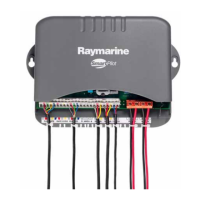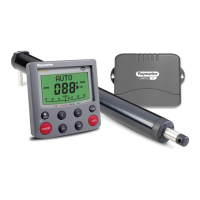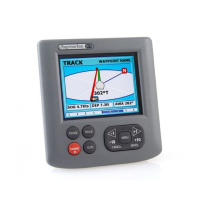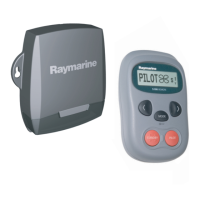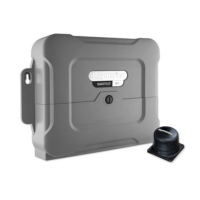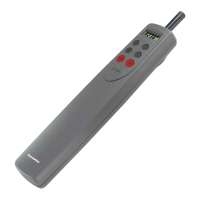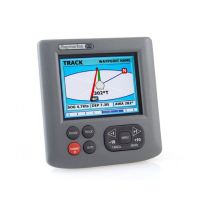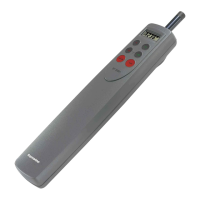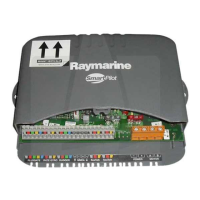28 S1 Wheel and Tiller Pilots Commissioning Guide
Adjusting the heading alignment
After completing the initial compass calibration, you can make further
adjustm ents to the align ment without having to swing the compa ss again.
Altho ugh the compass cal ibration removes most of the alignment error, small
errors (a few degrees) will prob ably remain.
Ideally, you sh ould check the headin g reading against a nu mber of known
headings, plot a deviation curve, and determine the heading alignment value that
will give the lowest
average
alignm ent error . Y ou can then enter this value on
the Headi ng Alignment sc reen, as described ab ove.
If the average headi ng error is more than 5°, y ou should perform the compass
deviation correction procedure again, circling more slowly and in more favorable
conditions.
Adjusting SmartPilot steering settings
T he next stage of the seatrial is to set key parameters that affect the SmartPilo t’s
steering ch aracteristics .
•
using Au toLearn:
T illerPilot (and gyro upgraded WheelPilot) syst ems can mak e use of
Auto Learn. Th is is a selflearning cali bration feature that auto matically
adjusts ru dder gain, coun ter rudder and Auto T rim to suit your bo at
•
manual setup:
WheelPilot (without the gyro upgrade) systems will require
manua l adjustment – see
page 31
for instructio ns.
AutoLearn
WARNING: AutoLearn safety
The Aut oLearn pr ocess requires a significant amount of CLEAR
SEA SP ACE in front of the boat. The SmartPilot will take the boat
thr ough a nu mber of zigzag mane uvers unt il it has acqu ired
enough data. These a ctions can r esult in sudden, sharp turns,
especially when th e AutoLearn funct ion is run on more
maneuverable boats. Press the
standby
key at any time to cancel
the AutoLearn and regain manual control of the boat.
Note:
For op timum AutoLearn result s, please ensure that your boat ’s rudder is aligned
correctly. See page 23 for mo re details.
81282_1.book Page 28 Monday, October 2, 2006 1:58 PM

